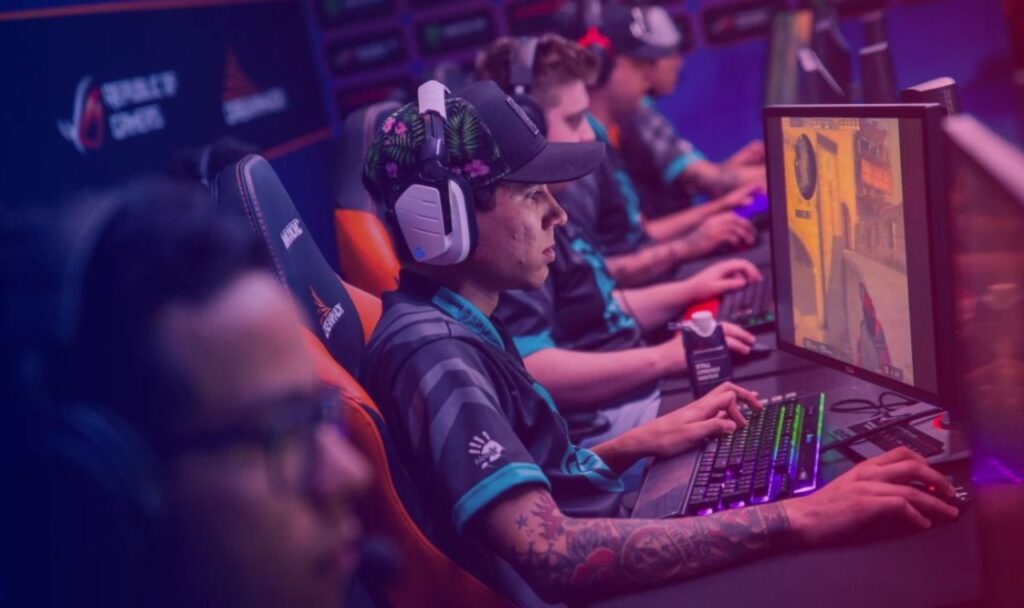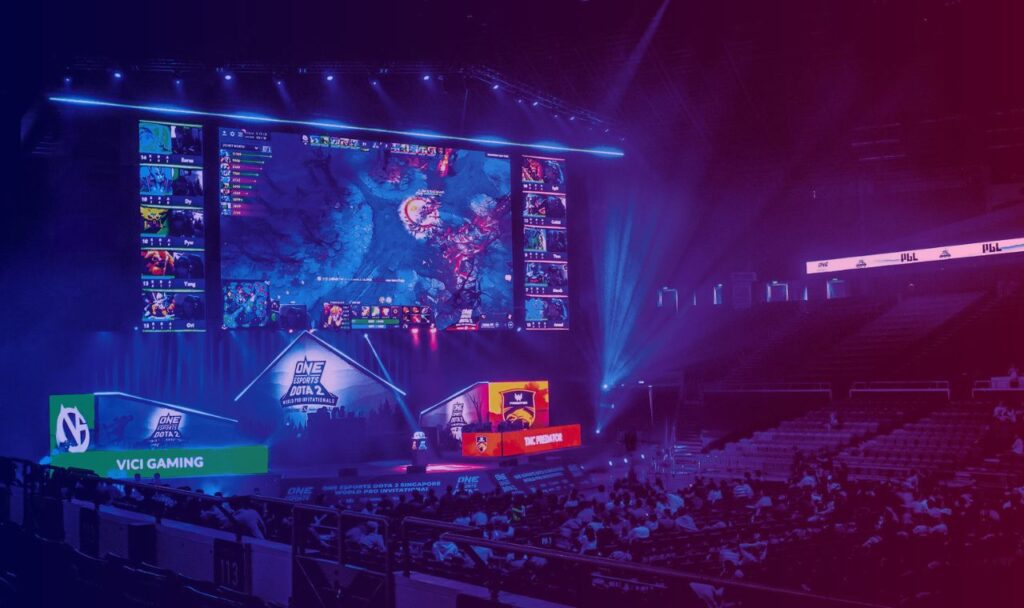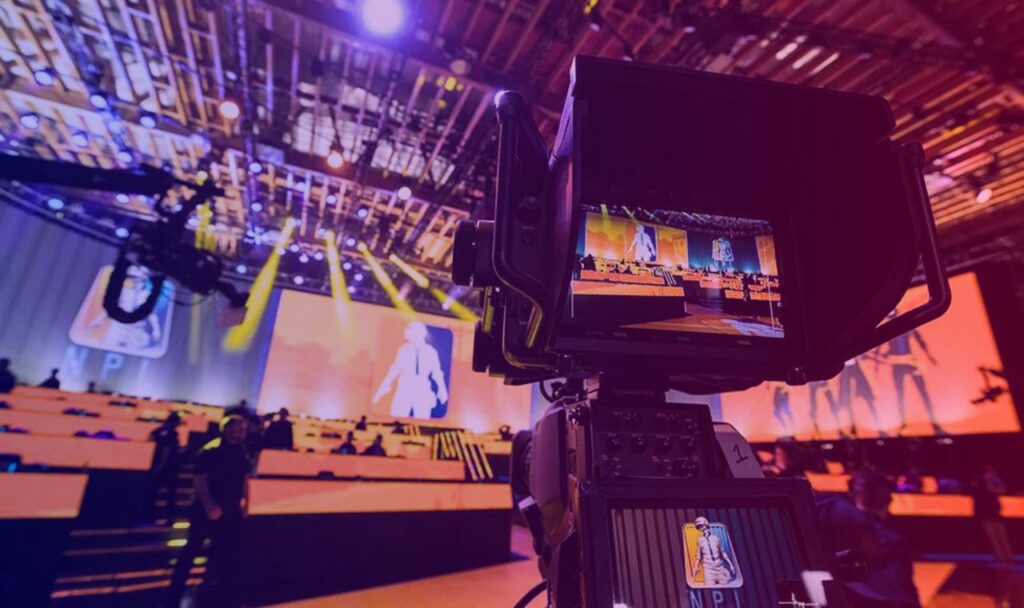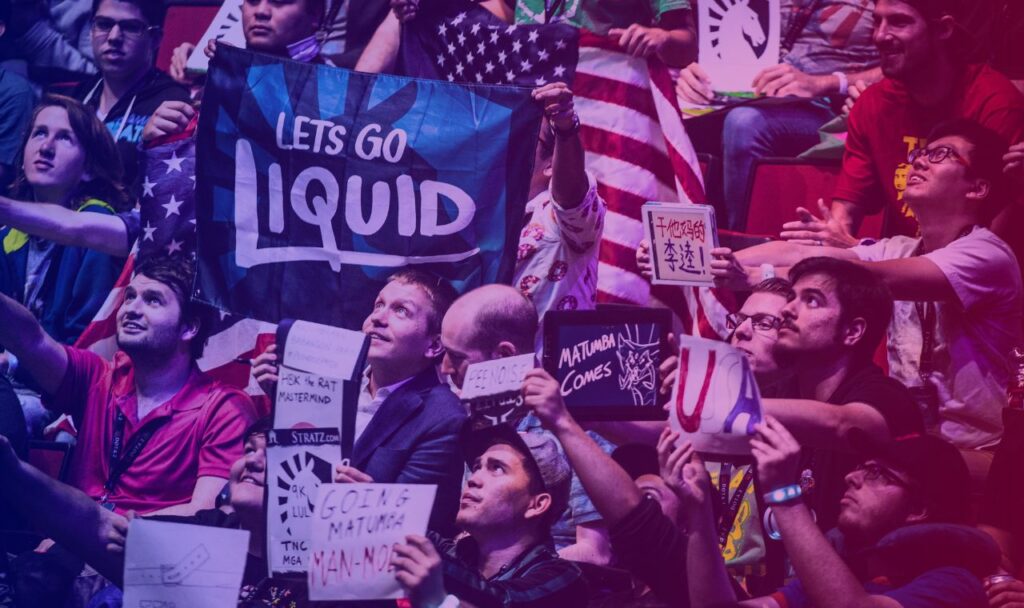Esports, once a niche phenomenon, has evolved into a mainstream cultural sensation. This blog post explores the journey of competitive gaming from its humble beginnings to becoming a global phenomenon. It examines the emergence of esports, the growth of professional organizations, the role of streaming platforms and traditional media, the widespread popularity and global reach, the influence on gaming culture, and the challenges and future outlook for the industry.
Esports emerged through early pioneers and competitive gaming events, driven by games like StarCraft, Counter-Strike, and Dota. The growth of online platforms and communities fostered the development of competitive gaming. The infrastructure and industry of esports saw the establishment of professional organizations, increased sponsorships and investments, and dedicated tournament organizers. These factors contributed to the growth and recognition of esports as a legitimate form of entertainment.
Media coverage and broadcasting played a crucial role in bringing esports to the masses. Streaming platforms like Twitch made esports accessible to a wide audience, while traditional media outlets embraced esports through broadcasting partnerships. Skilled commentators and analysts enhanced the viewing experience, adding excitement and insight to matches.
The popularity of esports skyrocketed, with major tournaments like The International and League of Legends World Championship attracting millions of viewers. Esports transcended cultural and geographical boundaries, captivating audiences worldwide. Efforts were made to include esports as a competitive event in major sporting events like the Olympics, further validating its mainstream appeal.
Esports had a profound influence on gaming culture. Professional players became celebrities, with their own fan communities and influence on gaming trends. The industry opened up diverse career opportunities beyond just playing, including coaching, team management, and content creation.
While esports has experienced remarkable growth, challenges remain. Governance and regulations need to be standardized to ensure fair competition. Inclusion and diversity within the esports ecosystem are vital for its continued success. Technological advancements like virtual reality and augmented reality hold the potential for shaping the future of esports.
In conclusion, esports has transitioned from a niche interest to a global sensation, revolutionizing the gaming industry. Its growth has been fueled by the emergence of professional organizations, media coverage, and its immense popularity worldwide. The influence of esports on gaming culture and the challenges it faces in the future highlight the dynamic nature of this exciting industry.
Table of Contents
Exploring how esports has transitioned from its humble beginnings to becoming a mainstream cultural phenomenon, Here are some points from grassroots beginnings to a global industry.
1. The Emergence of Esports

a. Early Beginnings: Tracing the roots of esports and the first competitive gaming events.
Esports, the competitive gaming phenomenon, emerged from the passion and competitive spirit of gaming enthusiasts. In its early beginnings, esports took shape through the organization of local events and community gatherings, providing a platform for players to showcase their skills and engage in friendly competition. These early events laid the foundation for the rapid evolution of esports, which has now become a multi-million dollar industry with global tournaments and dedicated professional players. The roots of esports highlight the deep connection between gaming and competition, and how this passion has propelled esports to become a captivating global phenomenon enjoyed by millions of fans worldwide.
Fast forward to the present, esports has become a thriving industry with a global reach. Professional players, dedicated teams, and major tournaments draw massive audiences both online and offline. Esports has transcended from local community events to international spectacles, captivating millions of fans worldwide. The passion and dedication of the early pioneers of competitive gaming set the stage for this phenomenal growth and success.
b. The Emergence of Esports: Examining the impact of games like StarCraft, Counter-Strike, and Dota in shaping the early esports scene.
The emergence of esports owes much of its early success to pioneering titles such as StarCraft, Counter-Strike, and Dota. These games played a significant role in shaping the early esports scene and establishing the foundation for competitive gaming.StarCraft revolutionized the real-time strategy genre, with its strategic gameplay and vibrant professional scene in South Korea. Counter-Strike, a groundbreaking first-person shooter, gained worldwide popularity with its team-based gameplay and skill-based mechanics.
Dota, a multiplayer online battle arena game, introduced complex strategy and team coordination, propelling it to the forefront of esports. These pioneering titles captivated players and fostered dedicated communities, showcasing the immense potential of competitive gaming. Their impact on the esports landscape cannot be overstated, as they set the stage for the remarkable growth and success of esports as we know it today. They showcased the potential of competitive gaming, fostered vibrant communities, and paved the way for future esports titles and tournaments. The impact of these games on the esports landscape cannot be overstated, as they set the stage for the remarkable growth and success that esports enjoys today.
c. Growth of Competitive Communities: Highlighting the role of online platforms and communities in fostering competitive gaming.
Esports, the thriving world of competitive gaming, owes much of its growth and development to the flourishing competitive communities that have formed around online platforms. These communities play a pivotal role in fostering and nurturing the spirit of competitive gaming, bringing players together, and providing platforms for skill development, collaboration, and friendly competition.
Online platforms have become the epicenters of competitive gaming communities, providing spaces for players to connect, communicate, and organize matches. Platforms like Twitch, Discord, and dedicated esports forums have become hubs where gamers can share strategies, engage in discussions, and form teams. These platforms have transcended geographical boundaries, allowing players from different parts of the world to connect and compete, contributing to the global nature of esports.
2. Infrastructure and Industry

a. Professional Organizations: Exploring the establishment of esports organizations and teams.
Professional organizations and teams have played a pivotal role in the growth and development of esports, transforming it from a grassroots movement into a fully-fledged industry. These organizations serve as the backbone of the esports ecosystem, providing structure, support, and opportunities for players to pursue competitive gaming as a profession. The establishment of professional organizations has not only elevated the status of esports but has also brought a sense of legitimacy to the industry. These organizations attract sponsorships and investments, forging partnerships with brands and companies that see the value and potential of esports.
Esports organizations are responsible for scouting and signing talented players, forming teams, and providing resources and infrastructure to support their growth. They offer professional contracts, salaries, and benefits to players, creating a sustainable environment where they can focus on honing their skills and competing at the highest level. These organizations also play a crucial role in talent development, providing coaching, training facilities, and access to experienced staff who help players reach their full potential.
b. Sponsorships and Investments: Discussing the influx of sponsorships and investments from mainstream brands and investors.
Sponsorships and investments from mainstream brands and investors have played a vital role in the rapid growth and commercialization of esports. As the popularity and viewership of esports continue to rise, major brands from various industries have recognized the immense potential of reaching a highly engaged and diverse audience through esports sponsorships. These investments have supported the establishment of professional leagues, the creation of esports infrastructure, and the development of talent pipelines, ensuring the continued expansion and professionalization of the industry.
These sponsorships provide financial support to esports organizations, tournaments, and individual players, enabling them to enhance their operations, infrastructure, and player development programs. Major brands, ranging from technology giants to energy drink companies, have embraced esports as a platform to connect with a younger demographic and establish their presence in the gaming community. By aligning their brand with esports, these sponsors gain exposure and brand recognition among millions of esports enthusiasts and viewers, creating mutually beneficial partnerships.
c. Tournament Organizers: Examining the role of dedicated tournament organizers in organizing and promoting esports events.
Dedicated tournament organizers are the driving force behind the organization and promotion of esports events, playing a crucial role in the growth and success of the industry. These organizers bring together players, teams, and fans, creating immersive and competitive environments that showcase the best of esports on a grand scale. The dedication and expertise of tournament organizers have contributed to the exponential growth of esports. Their efforts have led to the establishment of prestigious tournaments and leagues, such as The International and the League of Legends World Championship, which have become flagship events in the esports calendar.
Tournament organizers work tirelessly to curate and execute high-quality events that attract both participants and spectators. They handle various aspects of event management, including venue selection, scheduling, rules enforcement, and prize pool distribution. By creating structured and well-managed tournaments, organizers provide players with a platform to compete at a professional level and showcase their skills. Through strategic marketing efforts, they generate buzz and excitement, reaching out to fans through social media, advertising, and partnerships. By effectively leveraging these promotional channels, organizers attract a larger audience, both in-person and online, creating an electric atmosphere that adds to the overall experience of esports events.
3. Popularity and Global Reach

a. Massive Viewership: Highlighting the exponential growth in esports viewership and the impact of major tournaments
The International, the premier Dota 2 tournament organized by Valve Corporation, has set the benchmark for esports viewership. With its enormous prize pools and intense competition, The International attracts a massive global audience. Fans eagerly tune in to witness the thrilling battles between the world’s best Dota 2 teams, while the tournament’s innovative production values and engaging storytelling contribute to its allure. The event’s success has not only elevated the status of Dota 2 but has also become a shining example of the immense viewership potential of esports.
Similarly, the League of Legends World Championship, organized by Riot Games, has become a spectacle that captures the attention of esports enthusiasts worldwide. The tournament showcases the pinnacle of the League of Legends competition, featuring top teams from different regions battling for supremacy. The World Championship’s grandiose scale, with its massive venues, high-quality broadcasts, and captivating narratives, has propelled League of Legends to the forefront of esports viewership. The event consistently breaks records, drawing millions of viewers and creating moments of exhilaration that resonate within the gaming community and beyond.
b. Traditional Media Involvement: Discuss how traditional media outlets have embraced esports through broadcasting partnerships and coverage.
One significant aspect of traditional media involvement in esports is the broadcasting partnerships forged with major tournaments and leagues. Television networks and streaming platforms have secured rights to broadcast esports events, bringing the excitement of competitive gaming to a broader audience. This partnership allows esports to reach viewers who may not be familiar with the digital landscape of gaming, exposing them to the intense competition, thrilling moments, and engaging narratives that unfold during esports tournaments.
Moreover, traditional media outlets have expanded their coverage of esports, dedicating segments, articles, and even entire shows to the subject. They provide in-depth analysis, interviews with players and industry experts, and behind-the-scenes coverage of esports events. This comprehensive coverage helps educate and inform both existing fans and newcomers to the world of esports, bridging the gap between traditional sports and competitive gaming. By embracing esports, traditional media outlets have played a pivotal role in raising awareness, enhancing credibility, and expanding the reach of esports to a wider audience.
c. Commentators and Analysts: Recognizing the importance of skilled commentators and analysts in enhancing the viewing experience.
Commentators serve as the voice of esports, guiding viewers through the fast-paced action and capturing the excitement of each moment. Their energetic and knowledgeable delivery keeps audiences engaged and informed, providing context, highlighting player performances, and conveying the intensity of the matches. Commentators possess a deep understanding of the game mechanics, strategies, and player dynamics, enabling them to offer real-time analysis and narrative storytelling that adds depth and immersion to the viewing experience.
Analysts, on the other hand, provide post-match analysis, breaking down the strategies, decision-making, and key moments of the game. Their in-depth knowledge of the game and the competitive landscape allows them to offer valuable insights and perspectives. Analysts help viewers understand the nuances of the gameplay, unravel complex strategies, and showcase the skills and talents of the players. Their expertise fosters a deeper appreciation for the game and enhances the overall viewing experience by providing a comprehensive understanding of the matches.
4. Popularity and Global Reach

a. Massive Viewership: Highlighting the exponential growth in esports viewership and the impact of major tournaments like The International and League of Legends World Championship.
Esports has experienced an extraordinary surge in viewership, with a rapidly expanding fan base that has catapulted it into the mainstream. Major tournaments such as The International and the League of Legends World Championship have played a significant role in this growth. These tournaments attract millions of viewers from around the world, both online and through live attendance. The International, the marquee event for Dota 2, boasts record-breaking prize pools, which not only attract top-tier teams but also capture the attention of fans and casual observers alike.
The League of Legends World Championship, on the other hand, has achieved unprecedented viewership numbers, with its grand finale drawing in tens of millions of viewers. The massive viewership of these tournaments has propelled esports into the spotlight, attracting sponsorships, media coverage, and investment, further fueling its exponential growth.
b. Geographical Expansion: Exploring how esports has transcended cultural and geographical boundaries, captivating audiences worldwide.
Esports has transcended cultural and geographical boundaries, captivating audiences worldwide. The universal language of gaming has allowed esports to resonate with diverse communities and regions, fostering a global phenomenon. Major esports titles like Dota 2, League of Legends, and Counter-Strike: Global Offensive have built passionate fan bases in various regions, leading to the emergence of regional leagues and tournaments.
The popularity of these games has led to the formation of dedicated esports organizations and teams across the globe, showcasing the talent and skills of players from different cultures. With the advent of online streaming platforms and international competitions, fans from different countries can now connect and support their favorite players and teams, further strengthening the global appeal of esports. This geographical expansion has not only contributed to the growth of esports but has also created a vibrant and diverse community that celebrates the spirit of competitive gaming on a global scale.
c. Olympic Recognition: Discussing the efforts to include esports as a competitive event in major sporting events like the Olympics.
The recognition of esports as a competitive event in major sporting events like the Olympics has been a subject of discussion and debate. Efforts have been made to include esports as a demonstration sport or as a recognized competitive category within the Olympic Games. Esports’ potential inclusion is driven by its massive global audience, growing industry revenue, and its status as a legitimate form of competitive entertainment.
While esports has been featured in events like the Asian Games and the Southeast Asian Games, its path to becoming an official Olympic sport faces challenges related to its governance, standardization of competition, and differing opinions on its physicality and athletic nature. However, discussions between esports governing bodies, international sporting committees, and the Olympic community continue, exploring the possibilities of integrating esports into future Olympic Games. The recognition of esports in such prestigious events would mark a significant milestone, further legitimizing the industry and cementing its position as a mainstream form of sport and entertainment.
5. Influence on Gaming Culture

a. Professional Players and Superstars: Examining the rise of esports celebrities and their influence on gaming culture.
Esports has witnessed the rise of professional players who have become celebrities and icons within the gaming community. These players have achieved remarkable success and recognition, often earning large fan bases and garnering substantial social media followings. They serve as role models and sources of inspiration for aspiring gamers, showcasing the dedication, skill, and competitive spirit required to excel in esports.
These superstars often participate in high-stakes tournaments, representing their teams and captivating audiences with their exceptional gameplay and strategic prowess. Their influence extends beyond the virtual realm, with endorsement deals, sponsorship opportunities, and collaborations with major brands, further solidifying their status as influential figures within gaming culture.
b. Community Engagement: Discussing the strong bond between esports professionals and their fan communities.
One of the defining characteristics of esports is the strong bond between professional players and their fan communities. Esports professionals actively engage with their fans through various platforms, including social media, live streaming, and in-person events. They build personal connections, interact with their followers, and provide insights into their gaming journeys.
This level of accessibility and interaction fosters a sense of community and belonging for fans, who often form dedicated fan clubs, organize fan events, and even create fan art or fan fiction based on their favorite players. The relationship between players and fans is symbiotic, with fans providing support, encouragement, and loyalty, while players recognize and appreciate the immense impact their fans have on their careers. This strong community engagement is a cornerstone of esports culture and contributes to the vibrant and passionate ecosystem surrounding the industry.
c. Career Opportunities: Highlighting the diverse career paths that have emerged within the esports industry.
The growth of esports has created a myriad of career opportunities within the industry, extending beyond professional player roles. Esports now encompasses a wide range of professions and disciplines. From coaches and analysts who provide strategic guidance and performance analysis to team managers who handle logistics and operations, there are numerous roles that support the success of esports organizations. Broadcasting and production professionals, including commentators, hosts, and producers, play a critical role in delivering high-quality esports content to viewers.
Additionally, there are opportunities in event management, marketing, graphic design, social media management, and content creation, catering to the unique needs of the esports ecosystem. Moreover, the industry has witnessed the emergence of esports journalists, streamers, and influencers who provide coverage, analysis, and entertainment surrounding esports events. This diversification of career paths within esports has opened up exciting avenues for individuals passionate about gaming and esports to forge successful and fulfilling careers in the industry.
6. Challenges and Future Outlook

a. Governance and Regulations: Addressing the need for standardized governance and regulatory frameworks in esports.
As esports continues to grow and gain mainstream recognition, there is an increasing need for standardized governance and regulatory frameworks. With numerous esports titles, tournaments, and organizations operating worldwide, establishing consistent rules, fair competition standards, and ethical practices is crucial. Governing bodies, such as the International Esports Federation (IESF) and national esports associations, play a role in setting guidelines and regulations for players, teams, and tournaments.
These frameworks cover aspects such as player eligibility, anti-doping policies, tournament formats, prize pool distributions, and player contracts. The aim is to ensure transparency, fairness, and the protection of participants’ rights within the rapidly evolving esports landscape.
b. Inclusion and Diversity: Exploring the importance of inclusivity and diversity within the esports ecosystem.
Inclusivity and diversity are important considerations within the esports ecosystem. Efforts have been made to foster a welcoming and accessible environment for participants and fans from all backgrounds. This includes initiatives to address gender imbalance and promote female participation in esports, as well as supporting underrepresented communities and providing equal opportunities for individuals regardless of their race, ethnicity, or socioeconomic background. Esports organizations and tournaments strive to create inclusive spaces, implement codes of conduct, and provide resources for education and awareness.
In addition, diversity in game development, broadcasting, and leadership positions are being emphasized to reflect the diverse fan base and ensure a more representative industry. By embracing inclusivity and diversity, esports can enrich its community, expand its fan base, and become a more vibrant and inclusive space for all.
c. Technological Advancements: Discuss how emerging technologies like virtual reality and augmented reality might shape the future of esports.
The future of esports is intertwined with rapid technological advancements, with emerging technologies like virtual reality (VR) and augmented reality (AR) poised to shape the industry. VR technology has the potential to revolutionize the spectator experience, allowing fans to immerse themselves in virtual arenas and view matches from unique perspectives. It can also provide opportunities for players to enhance their training regimens through VR simulations. AR, on the other hand, can enhance live broadcasts and on-site experiences by overlaying digital information and graphics onto the real-world environment, adding a layer of interactivity and engagement.
Furthermore, advancements in streaming platforms, cloud gaming, and connectivity infrastructure will continue to enhance the accessibility and reach of esports, allowing fans to watch and participate in competitions from anywhere in the world. As these technologies continue to evolve, they will undoubtedly shape the future of esports, offering new avenues for innovation, audience engagement, and immersive experiences.


